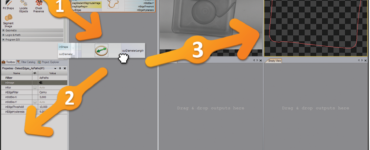In the fast-paced world of technology, innovation is a driving force that shapes the way we communicate and connect with each other. One such revolutionary development in the realm of communication during the 1980s was the Amiga Software FidoNet Welmat. This article delves into the significance of FidoNet, its integration with the Amiga software, and how it transformed the landscape of connectivity. Let’s embark on a journey through time and explore the impact of this groundbreaking technology.
1. What is FidoNet?
FidoNet was a pioneering network of bulletin board systems (BBS) that facilitated electronic communication between computers before the widespread use of the internet. Developed in 1984 by Tom Jennings, FidoNet enabled users to exchange messages, files, and other forms of data across various BBS nodes. It utilized a store-and-forward method, where messages were stored at each node until they could be transmitted to the intended destination.
2. The Rise of Amiga Software
The Amiga computer, introduced by Commodore in the mid-1980s, was known for its advanced multimedia capabilities and superior graphics performance. It quickly gained popularity among computer enthusiasts and creative professionals. The Amiga’s innovative architecture and powerful hardware made it an ideal platform for software development.
3. The Integration of FidoNet and Amiga
Recognizing the potential of the Amiga platform, developers began creating software applications that would seamlessly integrate with FidoNet. One such notable software was the Amiga Software FidoNet Welmat. This integration allowed Amiga users to access FidoNet services, expanding their communication horizons beyond the confines of traditional BBS systems.
4. Features and Capabilities of Amiga Software FidoNet Welmat
Amiga Software FidoNet Welmat provided Amiga users with a comprehensive set of features to enhance their FidoNet experience. It offered an intuitive user interface, making it easy for users to navigate and access various FidoNet functions. Users could compose and read messages, download and upload files, and participate in forums and discussions.
Furthermore, Amiga Software FidoNet Welmat incorporated advanced file transfer protocols, ensuring efficient and reliable data transmission. It supported popular protocols like XMODEM, YMODEM, and ZMODEM, enabling users to transfer files quickly and securely.
5. Advantages of FidoNet over Traditional BBS Systems
FidoNet’s integration with Amiga software brought numerous advantages over traditional BBS systems. Firstly, FidoNet expanded the reach of communication by connecting nodes worldwide, enabling users to communicate with individuals from different regions and cultures. This global network fostered a sense of community and shared interests.
Secondly, FidoNet’s store-and-forward method ensured message delivery even if the recipient’s node was temporarily unavailable. This feature eliminated the frustration of failed message deliveries often experienced in traditional BBS systems.
6. The Impact of FidoNet Welmat on Connectivity
The integration of FidoNet and Amiga software revolutionized the connectivity landscape during the 1980s and early 1990s. It empowered individuals to communicate, collaborate, and share information on a scale never seen before. FidoNet became a catalyst for knowledge exchange and contributed to the growth of online communities centered around diverse interests.
7. Security and Privacy Measures
Amiga Software FidoNet Welmat implemented robust security and privacy measures to protect user data and ensure a safe communication environment. Encryption algorithms were employed to secure sensitive information transmitted over the network, safeguarding user privacy from potential eavesdroppers.
8. FidoNet’s Influence on Future Technologies
While the internet eventually superseded FidoNet as the dominant communication medium, FidoNet’s influence on future technologies cannot be overlooked. FidoNet pioneered concepts like distributed networking and store-and-forward messaging, which laid the foundation for subsequent advancements in communication protocols and peer-to-peer networking.
9. The Transition and Legacy of FidoNet
As the internet gained prominence, many FidoNet nodes transitioned to internet-based communication systems. However, FidoNet continued to operate and foster a dedicated user base, particularly among retro computing enthusiasts. Today, FidoNet serves as a testament to the evolution of communication technologies and the enduring spirit of innovation.
10. Conclusion
The Amiga Software FidoNet Welmat left an indelible mark on the history of communication and connectivity. By integrating FidoNet with the Amiga platform, it expanded the possibilities of communication, facilitated global connections, and laid the groundwork for future advancements. While its prominence has diminished over time, its legacy lives on as a testament to the power of innovation and human connection.










